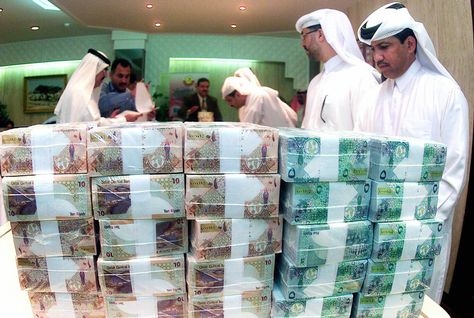Qatar’s banking sector is expected to stay in the trajectory of expanding profits and maintain double-digit loans and deposit growth rates in 2012, a report by Markaz (Kuwait Financial Centre) says. According to Markaz, Qatar will continue to see a surge in lending — by about 20% to $121bn in 2012. Bank deposits have been forecast to grow by 20.2% to about $134bn this year.
Bank provisioning (as percentage of loans) in Qatar is expected to come down to 0.4% this year from 0.5% in 2011, Markaz said.
“Banks continue to be overly cautious in their lending practices, with much financing going towards the government rather than the still-fledgling private sector. GCC loans have amounted to roughly $699bn in 2011, a 9% annual growth.
Markaz researchers expect bank lending to stabilize further in 2012; however, the bulk is expected to remain directed to the public sector. Loans growth is forecasted at 10% for the GCC to $766bn in 2012.
Markaz’s M R Raghu and Layla al-Ammar noted that after two consecutive years of “disappointing” figures, the GCC banking sector resumed its trajectory of expanding profits in 2010/2011.
The catalyst for this growth is declining provisions after the spikes witnessed in 2008/2009 as a result of the global financial crisis. Additionally, top line growth is expected to resume though not at previous rates due to continued sub-par loans and deposits growth weakness across the region. The year-on-year growth in total revenues of the GCC banking sector in 2011, however, was a “commendable” 10%, it said.
The debt issues, which caused a spike in provisioning, are by no means history; however, muted private demand and rising NPLs remain sources of concern in 2011 and beyond, Markaz noted.
As for lending, GCC banks continue to show muted growth; only Qatar and Oman banks have managed to maintain double digit loans and deposits growth rates.
For the rest of the GCC, a “new normal” of mid to high single digit growth is being registered.
Provisioning came down by 2% in 2011 and is expected to reduce further in 2012 as a consequence of abundant provisions built up in 2009 and 2010.
In UAE and Kuwait provisions are expected to remain above 1% of loans.
Overall, following the bottom-line growth rates of 9% and 16% in 2010 and 2011 respectively, the authors expect a surge of 21% in 2012.
After three years of muted performance following the global credit crisis and weak economy that followed, 2011 proved to be a relatively good year, with two of the largest markets, Saudi Arabia and UAE posting strong recoveries, Markaz said.
While Saudi Arabia and UAE had experienced declines in net income of over 1% each in 2010, 2011 witnessed a net income growth of 16.5% in the former and 18% in the latter.
GCC banks as a whole registered a growth of 15.8% in 2011. Saudi Arabia and Bahrain saw considerable declines in provisioning of 39% and 16% respectively in 2011.
Markaz expects the UAE, Kuwait and Oman to experience a similar trend in 2012, augmenting the bottom-line growth rate of the GCC banking sector in toto.
In 2011, GCC banks recorded 2% increase in interest income as against a 4% decline the previous year. Non-interest income grew by 18% in 2011.
Net interest income was up just 4% year-on-year in 2011 versus 14% in 2010; this weakness is predicated by a noticeable lack of turnaround in lending growth.
Loans grew in line with expectations at 9.12% in 2011 while deposits growth of 7% exceeded expectation. At the end of 2011, loans stood at $699bn while deposits were at $788bn.
Markaz researchers expect moderate growth in loans and deposits in 2012 at 10% and 7% respectively.
Gulf Times
15 June
























































